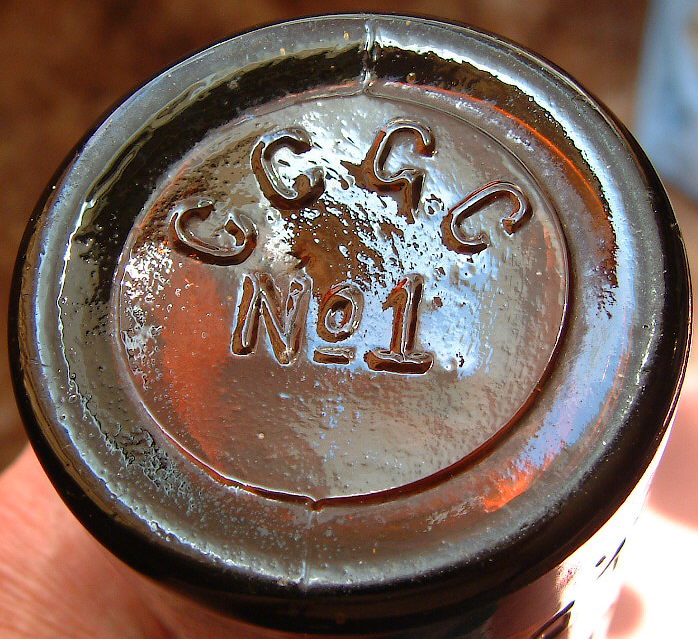
Antique glass bottles have been a fascination for many collectors and enthusiasts, with their intricate designs, shapes, and markings that tell a story of the past. Identifying these bottles can be a challenging but rewarding experience, and one of the key ways to do so is by examining their markings. In this article, we will delve into the world of antique glass bottles and explore five ways to identify them by their markings.
Understanding Antique Glass Bottle Markings
Antique glass bottle markings can be found in various forms, including etchings, embossings, and paper labels. These markings can provide valuable information about the bottle's origin, age, and purpose. Before we dive into the five ways to identify antique glass bottles by their markings, it's essential to understand the different types of markings and what they represent.

1. Maker's Marks
Maker's marks are one of the most common types of markings found on antique glass bottles. These marks identify the manufacturer or maker of the bottle and can provide valuable information about its origin and age. Maker's marks can be found in various forms, including etchings, embossings, and paper labels.
To identify antique glass bottles by maker's marks, collectors and enthusiasts can use reference books and online resources to research the mark and its corresponding manufacturer. For example, the mark " B&H" might indicate that the bottle was made by the Boston and Sandwich Glass Company.
Deciphering Maker's Marks
Deciphering maker's marks can be a challenging task, as many marks are similar or have been altered over time. However, by using reference books and online resources, collectors and enthusiasts can increase their chances of identifying the mark and its corresponding manufacturer.

2. Patent Dates
Patent dates are another type of marking found on antique glass bottles. These dates indicate when the bottle's design or manufacturing process was patented. Patent dates can provide valuable information about the bottle's age and authenticity.
To identify antique glass bottles by patent dates, collectors and enthusiasts can use reference books and online resources to research the date and its corresponding patent. For example, the patent date "Oct 10, 1876" might indicate that the bottle was made using a patented design or manufacturing process.
Understanding Patent Dates
Understanding patent dates is crucial in identifying antique glass bottles. By knowing the patent date, collectors and enthusiasts can determine the bottle's age and authenticity.

3. Numerical Codes
Numerical codes are another type of marking found on antique glass bottles. These codes can provide information about the bottle's size, shape, and contents. Numerical codes can be found on the base or body of the bottle.
To identify antique glass bottles by numerical codes, collectors and enthusiasts can use reference books and online resources to research the code and its corresponding information. For example, the code "10-16-22" might indicate that the bottle is 10 inches tall, 16 inches wide, and has a capacity of 22 ounces.
Deciphering Numerical Codes
Deciphering numerical codes can be a challenging task, as many codes are similar or have been altered over time. However, by using reference books and online resources, collectors and enthusiasts can increase their chances of identifying the code and its corresponding information.

4. Anchor and H Marks
Anchor and H marks are a type of marking found on antique glass bottles, particularly those made by the Hazel-Atlas Glass Company. These marks can provide information about the bottle's manufacturer and age.
To identify antique glass bottles by anchor and H marks, collectors and enthusiasts can use reference books and online resources to research the mark and its corresponding manufacturer. For example, the anchor mark might indicate that the bottle was made by the Hazel-Atlas Glass Company, while the H mark might indicate that the bottle was made using a specific type of glass.
Understanding Anchor and H Marks
Understanding anchor and H marks is essential in identifying antique glass bottles made by the Hazel-Atlas Glass Company. By knowing the meaning of these marks, collectors and enthusiasts can determine the bottle's manufacturer and age.

5. Paper Labels
Paper labels are a type of marking found on antique glass bottles, particularly those made in the late 19th and early 20th centuries. These labels can provide information about the bottle's contents, manufacturer, and age.
To identify antique glass bottles by paper labels, collectors and enthusiasts can use reference books and online resources to research the label and its corresponding information. For example, the label " Coca-Cola" might indicate that the bottle was made for the Coca-Cola Company.
Understanding Paper Labels
Understanding paper labels is essential in identifying antique glass bottles. By knowing the meaning of these labels, collectors and enthusiasts can determine the bottle's contents, manufacturer, and age.

Conclusion
Identifying antique glass bottles by their markings can be a challenging but rewarding experience. By understanding the different types of markings, including maker's marks, patent dates, numerical codes, anchor and H marks, and paper labels, collectors and enthusiasts can increase their chances of identifying the bottle and its corresponding information. Whether you're a seasoned collector or just starting your journey, understanding antique glass bottle markings is essential in appreciating the beauty and history of these fascinating objects.
Gallery of Antique Glass Bottles Markings



What are the most common types of markings found on antique glass bottles?
+The most common types of markings found on antique glass bottles include maker's marks, patent dates, numerical codes, anchor and H marks, and paper labels.
How can I identify antique glass bottles by their markings?
+To identify antique glass bottles by their markings, you can use reference books and online resources to research the mark and its corresponding information.
What is the significance of anchor and H marks on antique glass bottles?
+Anchor and H marks are significant because they can provide information about the bottle's manufacturer and age, particularly for bottles made by the Hazel-Atlas Glass Company.











